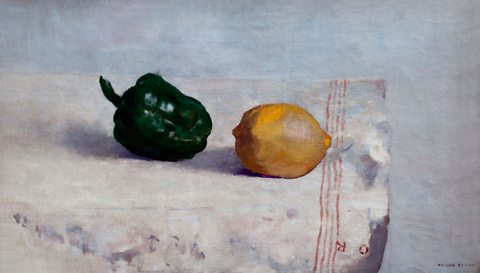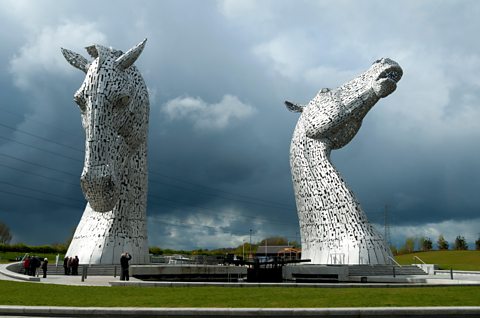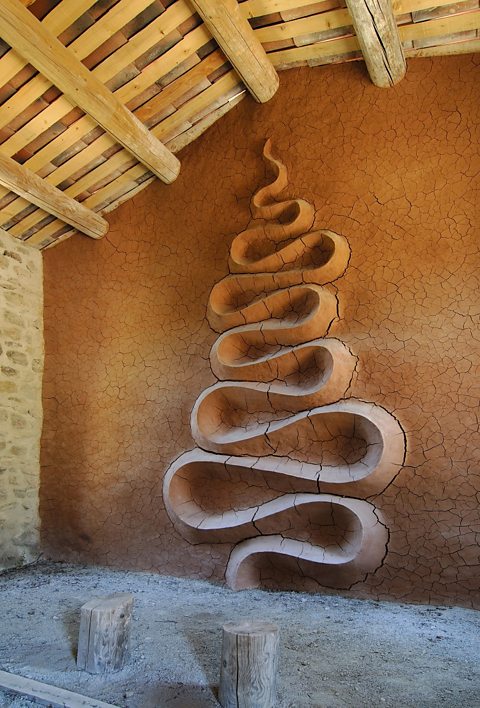Organic forms
Organic forms look natural. The most obvious example of organic forms are realistic representations of the natural world or living things.

Lemon and Pepper on a White Tablecloth (Odilon Redon, 1901) shows implied forms realistically.
Both objects have been painted realistically and shape, texture, tone and colour are all used to show them as imperfect organic forms.


Although The Kelpies (Andy Scott, 2008-13) are massive in scale and made from steel, they appear like real horses.
The real forms created are flowing, irregular and organic.

Forms don’t have to be realistic to be organic.

In Mother and Child (1934), Barbara Hepworth has sculpted two smooth and rounded figures. The mother form wraps round the smaller child. The two flowing organic forms are similar and complement each other.
Although made of stone, these real forms appear soft and the composition seems natural and relaxed.

Andy Goldsworthy's Refuge d’Art (2005) is a clay sculpture that snakes up the wall inside a shelter in the French Alps.
The flowing organic form looks like the irregular coils of a snake. It also resembles the twisting path hikers would have to take to visit the remote building the artwork is housed within.
